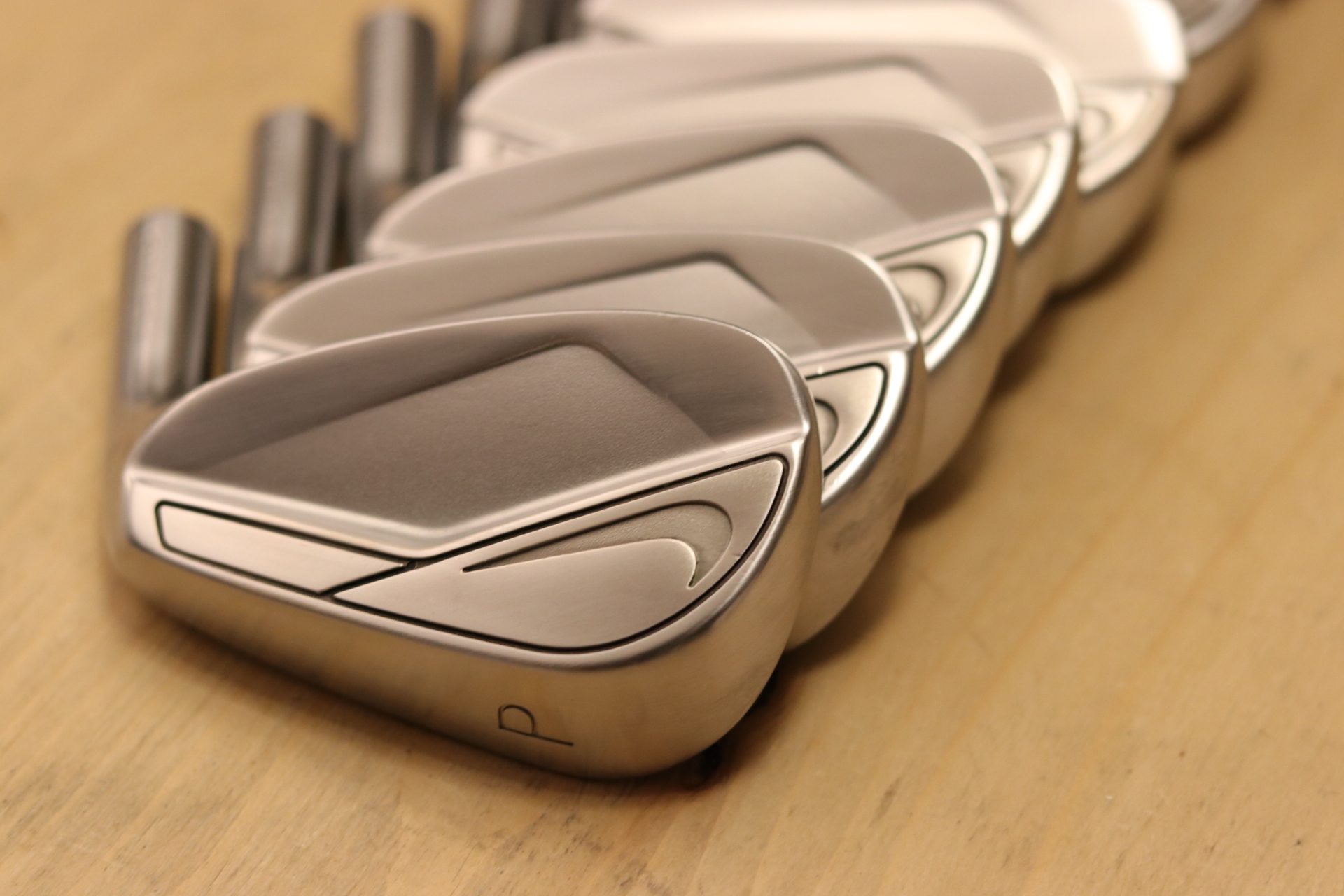
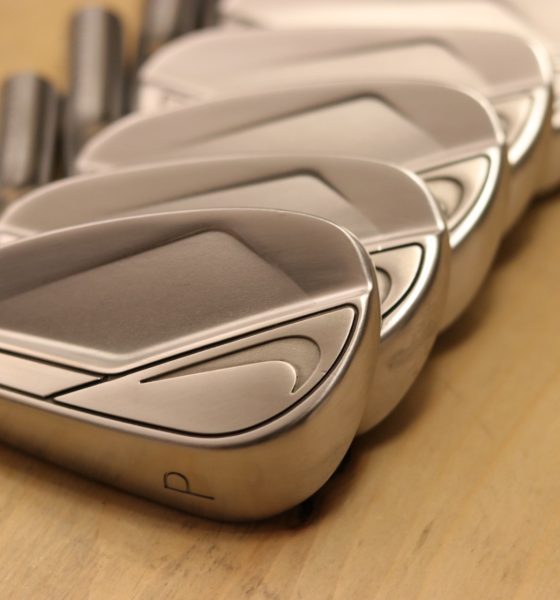
Equipment
Nike Golf club nostalgia
As time passes, we often look back on prior events and designs with rose-colored glasses. This reborn love for classic designs has taken hold in a number of avenues, from clothing, to cars, and even golf equipment.
In the case of cars, models that would have been considered odd and ugly are now cherished by those that appreciate their origins.
Case in point, below.
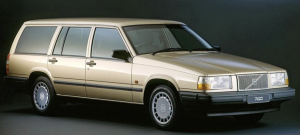
Often, these nostalgic cycles are created generationally by individuals who at one point admired a design but were too young or not financially able to afford what they really wanted. Once these individuals reach an age of financial stability they seek nostalgia and are willing to pay good money to rekindle that fond memory.
In the case of golf equipment, over the last five years, there has been a renaissance of golf nerddom on a number of levels. From persimmon enthusiasts looking to capture and enjoy golf the way it used to be played, to other players seeking out sets of modern clubs they idolized as younger golfers but could also never afford. The great thing for those searching for older clubs is that it’s way less expensive than buying a car.
Notable Nike Golf moments
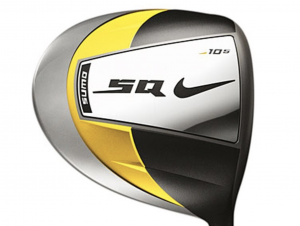
Nike fits well into this cycle of nostalgia, and there are a number of factors to consider, the most important being the resurgence of Tiger Woods as a major champion—even if he no longer uses those clubs. Around the late 2000s and early part of the next decade, it wasn’t just Mr. Woods racking up wins.
In fact, Nike had a number of its athletes achieve big milestones including Trevor Immelman winning the 2008 Masters, Lucas Glover winning the 2009 U.S. Open, Stuart Cink winning the 2009 Open Championship (*we all know you were cheering for Tom Watson), and Charl Schwartzel winning the 2011 Masters with four-straight closing birdies—all with bags full of Nike gear.

Let’s just take a moment to remember that both Glover and Cink won using the square Nike SQ Sumo2 Tour driver—the lower spinning version of the often-mocked SQ Sumo2, and Nike had a number of other very high profile players during this time period.
The retail experience
During this era of Nike Golf, I worked frontline in big box golf retail, and as much as we found Nike gear performed well, it was generally a difficult sell to (vast generalization coming here) older established golfers who were used to looking at the traditional brands. The loud colors we are used to seeing today were forward-thinking and also a turn off to many consumers even if the clubs did perform.
The story of Nike Golf’s life in the hards good space is well documented, so I don’t need to do an entire recap of its exit. It is well known that no matter what you thought of their clubs, the underlying dark horse was always their forged irons and wedges, and that leads us to one man—Mike Taylor.
Once Nike decided to exit the hard goods space, this left a lot of extremely talented people looking for new opportunities, and a small group from Nike went out on their own and created Artisan Golf out of what was previously “The Oven,” Nike’s R&D facility. Mike Taylor, Dave Richey, and John Hatfield, all men with decades of experience hand-building golf clubs from scratch started offering their expertise to anyone looking for a hands-on approach to their own equipment. With their well-documented history working with players, it didn’t take long for Artisan to build a following.
This following and newfound interest in this small team brought with it much deserved notoriety to more general golfers than they ever received while working under Nike Golf. As their well-documented history continues to become more well known, it has created a higher demand for their Artisan products and in turn, has golfers searching for alternatives and looking back with much more fondness to previous Nike clubs.
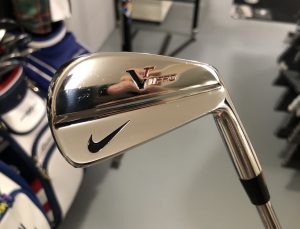
As a constant consumer of the used club marketplace and lover of forged blades, I have been pleasantly surprised to see how Nike clubs including the VR Forged Blades, VR Pro II, and older forged wedges have held value compared to similar clubs in the same category from other manufacturers. The only logical reason for this increased value is golfers realizing the people behind these clubs are true craftsmen and just as important in victory as the athletes who used them.
In the case of used club shopping, it’s still a relatively inexpensive pursuit compared to other hobbies, and if you are in the market for some classic Nike gear, be prepared to pay a small premium for the right to own some of the best-made forged irons of the last decade.
- LIKE127
- LEGIT19
- WOW2
- LOL3
- IDHT0
- FLOP2
- OB2
- SHANK17
Whats in the Bag
WITB Time Machine: Danny Willett’s winning WITB, 2016 Masters
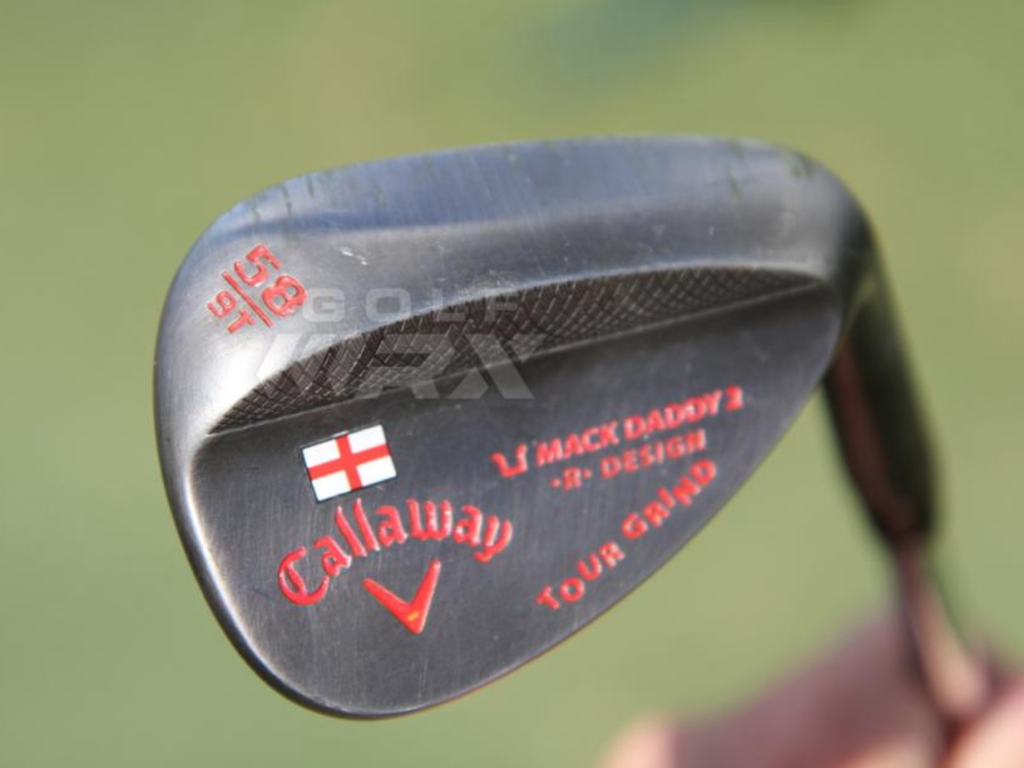
Driver: Callaway XR 16 (9 degrees)
Shaft: Mitsubishi Rayon Diamana W-Series 60 X
Length: 45.5 inches
3-wood: Callaway XR 16 (15 degrees)
Shaft: Mitsubishi Rayon Diamana W-Series 70X
5-wood: Callaway XR 16 (19 degrees)
Shaft: Mitsubishi Rayon Diamana W-Series 80X
Irons: Callaway Apex UT (2, 4), Callaway Apex Pro (5-9)
Shaft: True Temper Dynamic Gold X100 Superlite
Wedges: Callaway Mack Daddy 2 (47-11 S-Grind) Callaway Mack Daddy 2 Tour Grind (54-11, 58-9)
Shaft: True Temper Dynamic Gold X100 Superlite
Putter: Odyssey Versa #1 Wide (WBW)
Lie angle: 71 degrees
Ball: Callaway Speed Regime SR-3
Check out more photos of Willett’s equipment from 2016 here.
- LIKE2
- LEGIT0
- WOW1
- LOL0
- IDHT0
- FLOP0
- OB0
- SHANK0
Equipment
Project X Denali Blue, Black shaft Review – Club Junkie Review
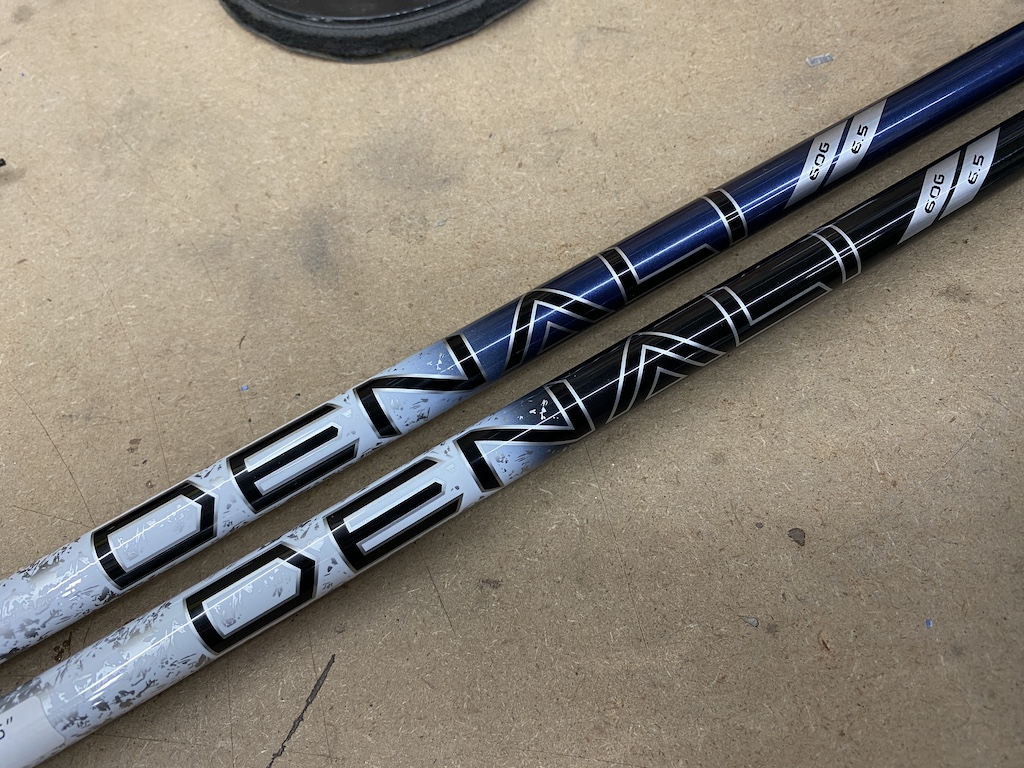
Originally, Project X was known for low-spin steel iron shafts. However, the company might now be known for wood shafts. Denali is the newest line of graphite shafts from Project X. With the Denali line, the company focuses on feel as well as performance.
There are two profiles in the Denali line, Blue and Black, to fit different launch windows. Denali Blue is the mid-launch and mid-spin profile for players who are looking for a little added launch and Denali Black is designed for low-launch and low-spin. Both models are going to offer you a smooth feel and accuracy.
For a full in-depth review check out the Club Junkie podcast on all podcast streaming platforms and on YouTube.
Project X Denali Blue
I typically fit better into mid-launch shafts, as I don’t hit a very high ball so the Denali Blue was the model I was more excited to try. Out of the box, the shaft looks great and from a distance, it is almost hard to tell the dark blue from the Denali Black. With a logo down install of the shaft, you don’t have anything to distract your eyes, just a clean look with the transition from the white and silver handle section to the dark navy mid and tip.
Out on the course, the Blue offers a very smooth feel that gives you a good kick at impact. The shaft loads easily and you can feel the slightly softer handle section compared to the HZRDUS lineup. This gives the shaft a really good feel of it loading on the transition to the downswing, and as your hands get to impact, the Denali Blue keeps going for a nice, strong kick.
Denali Blue is easy to square up at impact and even turn over to hit it straight or just little draws and most of the flex of the shaft feels like it happens right around where the paint changes from silver to blue. The Blue launches easily and produces what I consider a true mid-flight with the driver. While it is listed as mid-spin, I never noticed any type of rise in my drives. Drives that I didn’t hit perfectly were met with good stability and a ball that stayed online well.
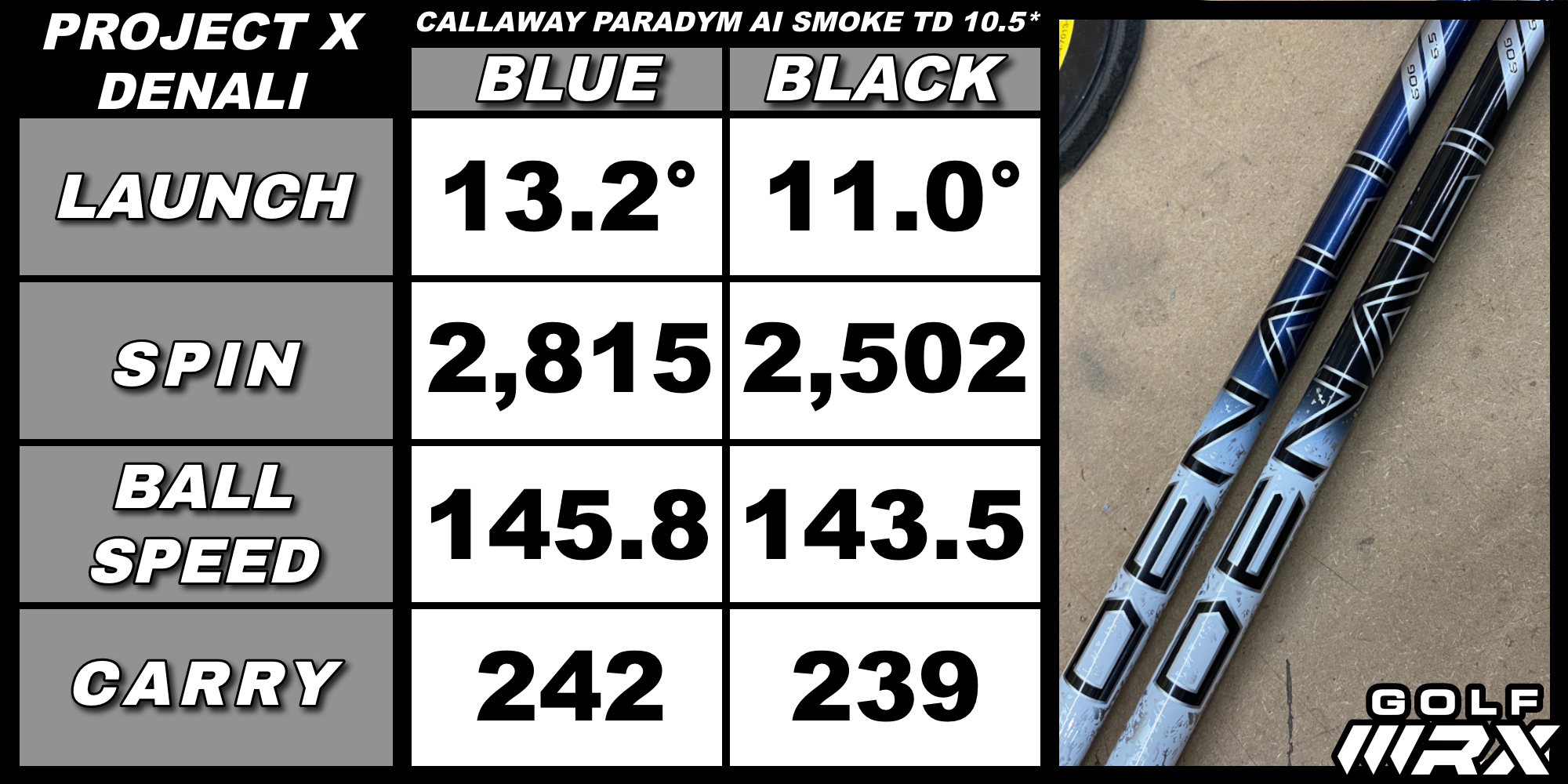
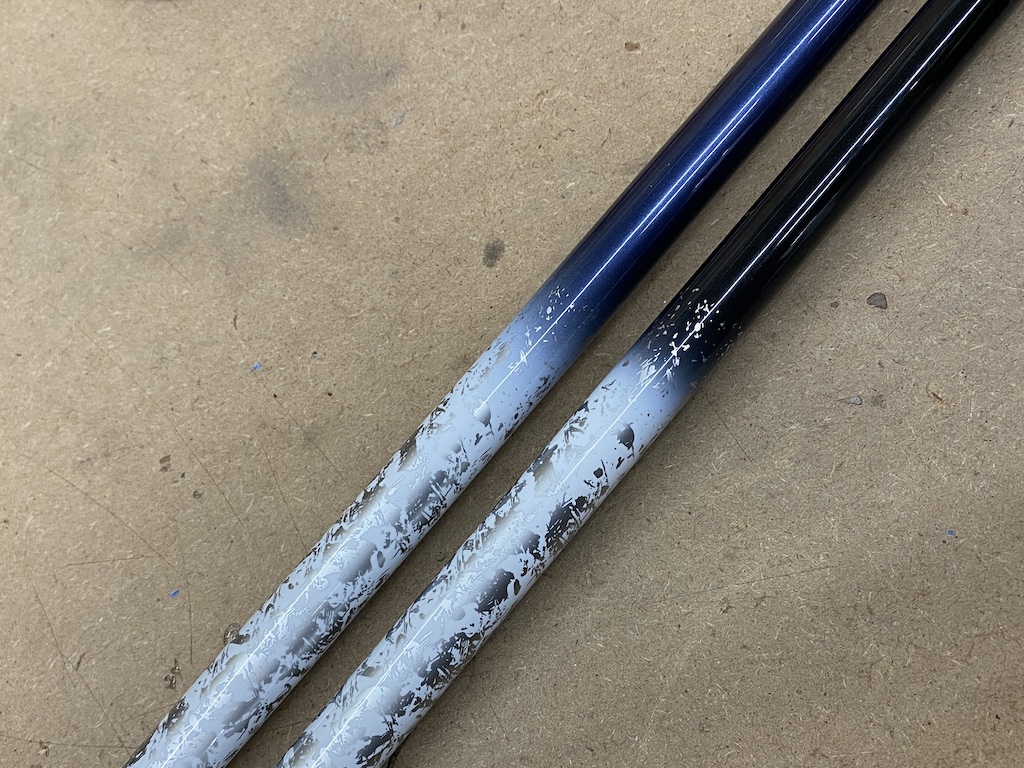
Project X Denali Black
When you hold the Denali Black in your hands you can tell it is a more stout shaft compared to its Blue sibling by just trying to bend it. While the handle feels close to the Blue in terms of stiffness, you can tell the tip is much stiffer when you swing it.
Denali Black definitely takes a little more power to load it but the shaft is still smooth and doesn’t give you any harsh vibrations. Where the Blue kicks hard at impact, the Black holds on a little and feels like keeps you in control even on swings that you try and put a little extra effort into. The stiff tip section also makes it a little harder to square up at impact and for some players could take away a little of the draw from their shot.
Launch is lower and more penetrating compared to the Blue and produces a boring, flat trajectory. Shots into the wind don’t rise or spin up, proving that the spin stays down. Like its mid-launch sibling, the Black is very stable and mishits and keeps the ball on a straighter line. Shots low off the face don’t get very high up in the air, but the low spin properties get the ball out there farther than you would expect. For being such a stout shaft, the feel is very good, and the Denali Black does keep harsh vibrations from your hands.
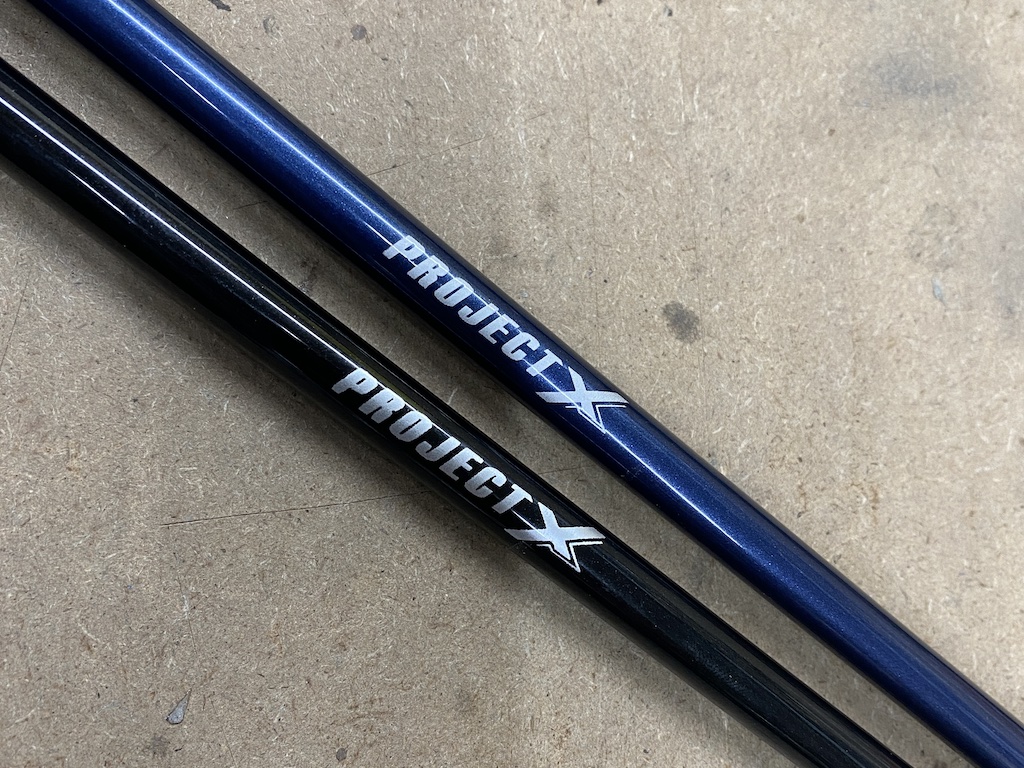
Overall the Project X Denali Blue and Black are great additions to the line of popular wood shafts. If you are looking for good feel and solid performance the Denali line is worth trying out with your swing. Choose Blue for mid-launch and mid-spin or Black for lower launch and low spin.
- LIKE2
- LEGIT1
- WOW1
- LOL0
- IDHT0
- FLOP0
- OB0
- SHANK0
Equipment
What we know about Bryson DeChambeau’s 3D-printed Avoda irons
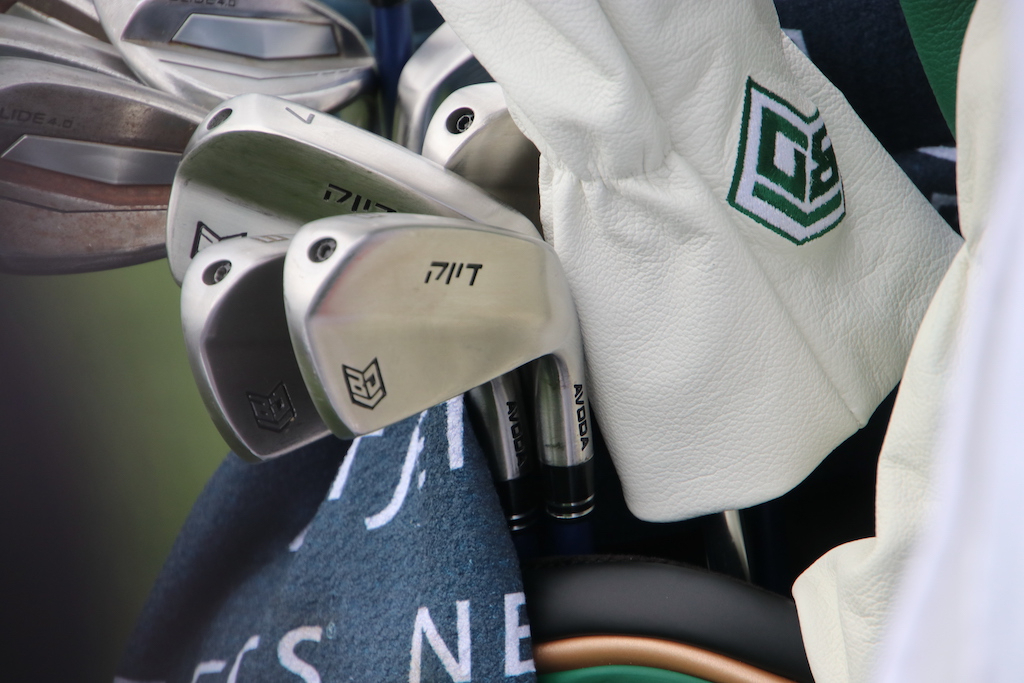
Bryson DeChambeau fired an opening-round 7-under 65 at Augusta National, hitting an impressive 15 of 18 greens in regulation in the process. Golf’s mad scientist’s play grabbed headlines and so too did his equipment. In place of the Ping i230 irons he had in the bag last week for LIV Golf’s Miami event, DeChambeau is gaming a prototype 5-PW set of irons from little-known direct-to-consumer manufacturer Avoda.
What is Avoda Golf?
Founded by Tom Bailey, also a Mike Schy student like Bryson DeChambeau, Avoda Golf is a direct-to-consumer golf equipment company that currently manufactures both single and variable-length irons in one model that are available for pre-order.
What irons is Bryson DeChambeau playing?
Per multiple reports, DeChambeau is playing a custom-designed set of single-length irons that incorporate bulge and roll into the face design. The two-piece 3D-printed irons were reportedly only approved for play by the USGA this week, according to Golfweek’s Adam Schupak.
Regarding the irons, DeChambeau told Golf Channel the irons’ performance on mishits was the determining factor in putting them in play this week. “When I mishit on the toe or the heel,” DeChambeau said. “It seems to fly a lot straighter for me and that’s what has allowed me to be more comfortable over the ball.”
What can we tell about the design of the clubs?
These days, it is a little hard to speculate on what is under the hood with so many hollow body irons. DeChambeau’s irons look to be hollow on the lower section as they do flare back a decent amount. That “muscle” on the back also looks to be fairly low on the iron head, but we can assume that is progressive through the set, moving up higher in the short irons.
A screw out on the toe is probably used to seal up the hollow cavity and used as a weight to dial in the swing weight of the club. From pictures, it is hard to tell but the sole looks to have a little curve from heel to toe while also having some sharper angles on them. A more boxy and sharper toe section looks to be the design that suits Bryson’s eye based on the irons he has gravitated toward recently.
What are bulge and roll, again?
Two types of curvature in a club face, traditionally incorporated only in wood design. Bulge is heel-toe curvature. Roll is crown-sole curvature. Both design elements are designed to mitigate gear effect on off-center strikes and produce shots that finish closer to the intended target line. (GolfTec has an excellent overview of bulge and roll with some handy GIFs for the visual learner)
What else is in DeChambeau’s bag?
Accompanying his traditional Sik putter, Bryson builds his set with a Ping Glide 4.0 wedges, a Krank Formula Fire driver and 5-wood, and a TaylorMade BRNR Mini Driver, all with LA Golf graphite shafts.
- LIKE86
- LEGIT26
- WOW19
- LOL11
- IDHT5
- FLOP3
- OB5
- SHANK15
-

 19th Hole3 days ago
19th Hole3 days agoDave Portnoy places monstrous outright bet for the 2024 Masters
-

 19th Hole3 weeks ago
19th Hole3 weeks agoJohn Daly stuns fans into silence with brutal opening tee shot on PGA Tour Champions
-

 19th Hole2 weeks ago
19th Hole2 weeks agoThings got heated at the Houston Open between Tony Finau and Alejandro Tosti. Here’s why
-

 19th Hole4 days ago
19th Hole4 days agoTiger Woods arrives at 2024 Masters equipped with a putter that may surprise you
-

 19th Hole1 week ago
19th Hole1 week agoReport: Tiger Woods has ‘eliminated sex’ in preparation for the 2024 Masters
-

 19th Hole3 weeks ago
19th Hole3 weeks agoCharlie Woods finds it tough going on American Junior Golf Association debut
-

 19th Hole2 weeks ago
19th Hole2 weeks agoAddiction, spinal fusion, and scam artists – Everything Anthony Kim revealed in candid interview with David Feherty
-

 19th Hole1 week ago
19th Hole1 week agoAnthony Kim says doctors told him that he ‘may not have much time left’ ahead of LIV return







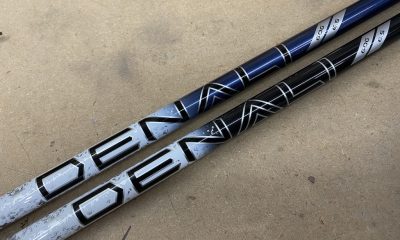



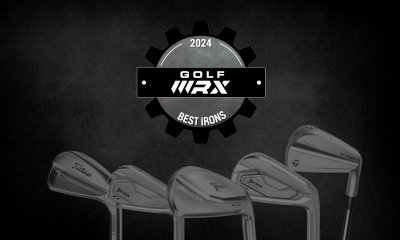



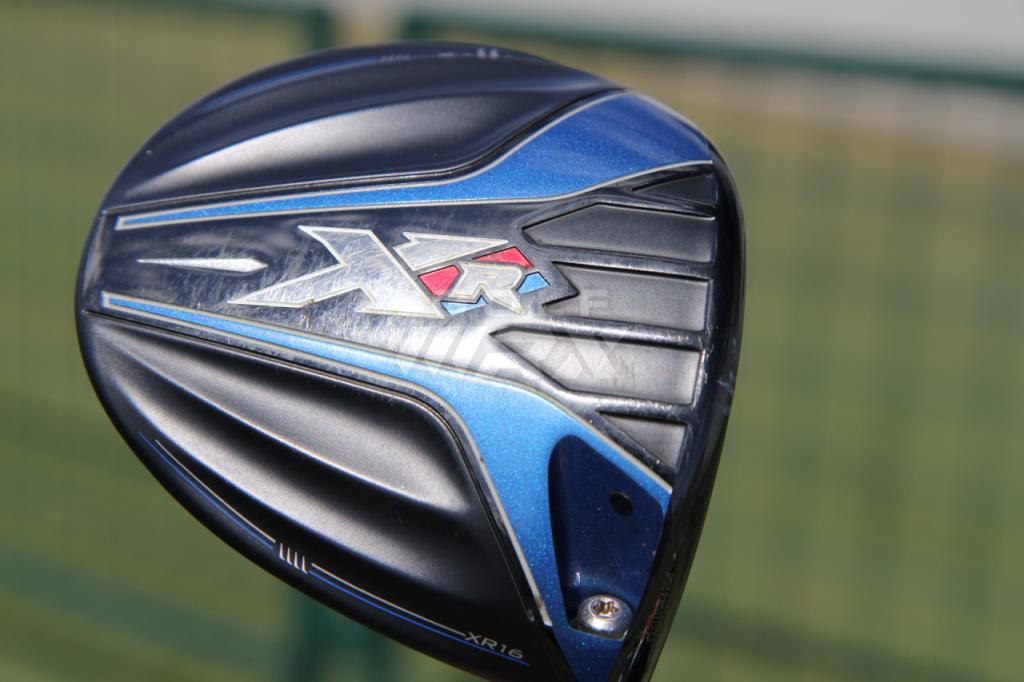
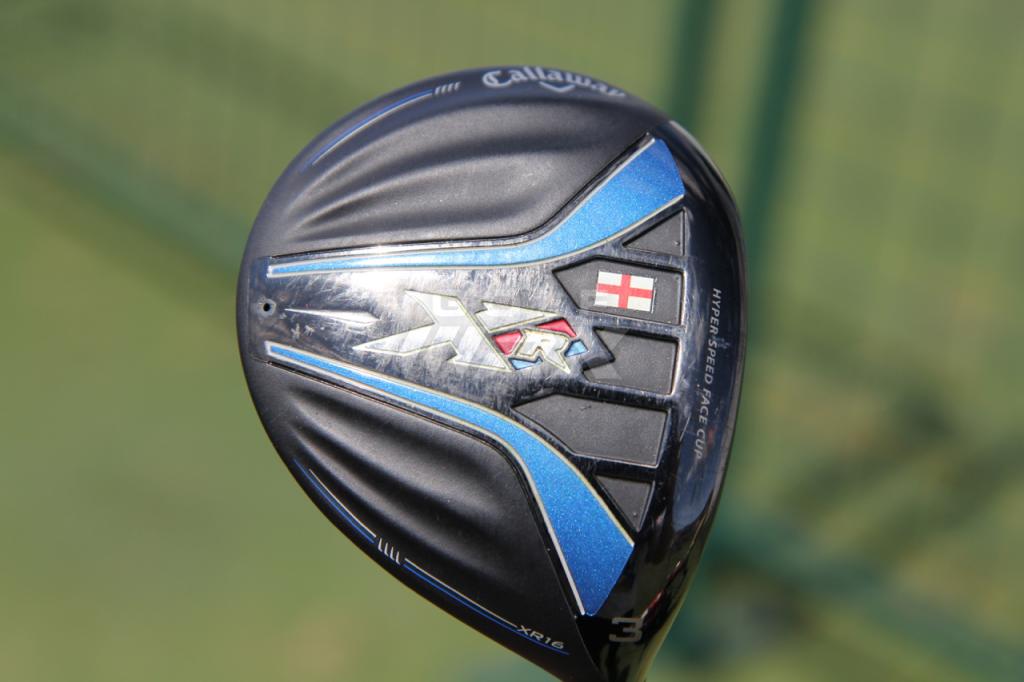

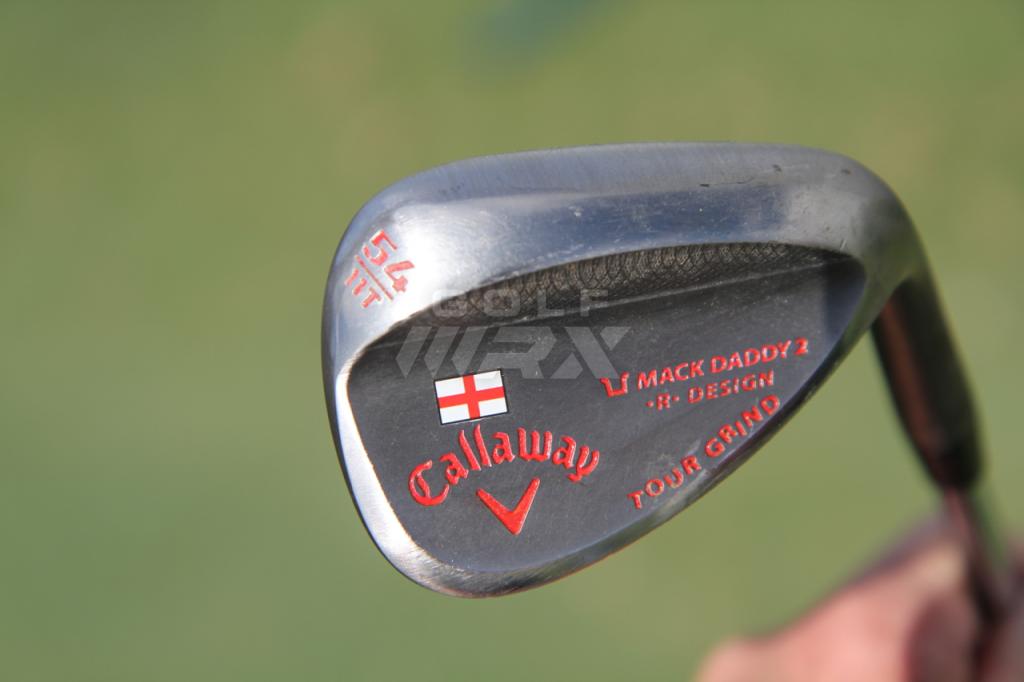
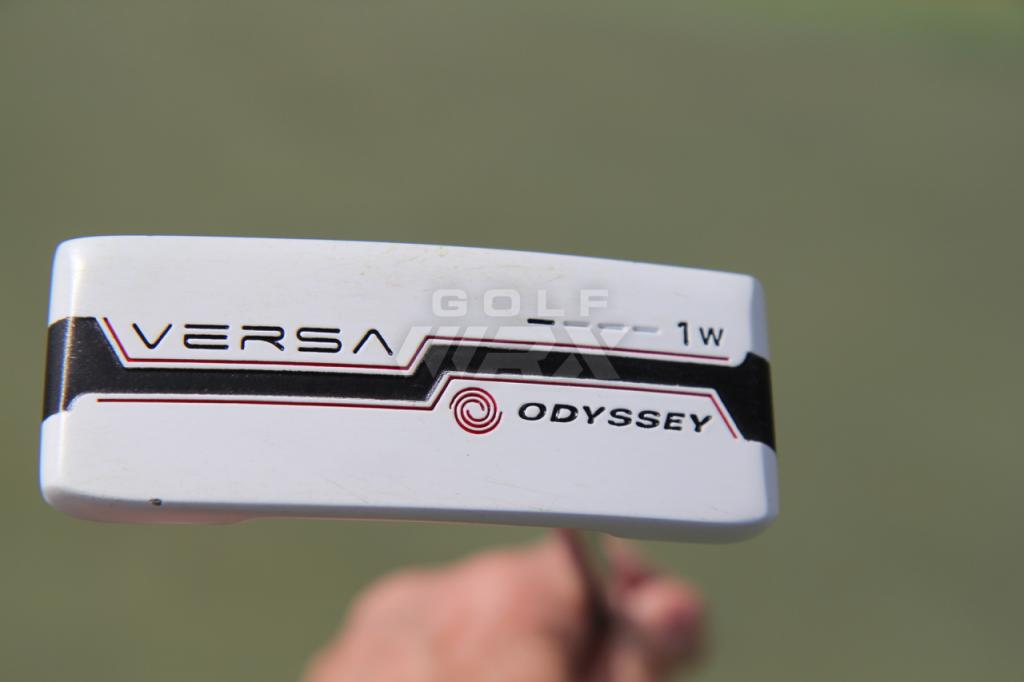












Pingback: GolfWRX Spotted: Never-before-seen Nike Vapor Pro Combo FF iron – GolfWRX
Lefthack
Jan 28, 2021 at 1:05 pm
Try finding Nike gear in lefty. Not awful, but also not as easy to find as I’d like. But they made awesome combo iron sets.
Pingback: Where Have You Gone Rory Sabbatini? – PGA Golf Gameday
Pingback: Nike clubs continue to see action on Tour – GolfWRX
Dave
Sep 16, 2020 at 2:08 pm
My clubs are wicked dated so I went on eBay and picked up a Sumo2 driver, sumo 3 and 5 wood, and a Sumo 3h and CPR 4h. I got everything for less than $100 and am very happy with all of them. I didn’t play hybrids before getting these.
I am now looking at either the sumo or split cavity forged irons because a set of left are about $200. That seems like a deal for the forged irons and have good reviews.
Clarence
Apr 11, 2020 at 9:27 am
I wax using Nike slingshot, just upgraded to the VR pro Cavity.. i love them..
Hardy
Mar 27, 2020 at 5:02 pm
I have Nike blades (the VR Pro II – LOL), hybrids, and putter that I may sell if the price is right.
Todd
Mar 27, 2020 at 3:58 pm
The sq 2 fairway was super legit. I wish I had never parted with it
Egdew Rich
Mar 27, 2020 at 9:45 am
Vapor Flex driver..have two of them..were far ahead of their time!
Cliff
Mar 27, 2020 at 9:28 am
Have an orange, black and white Nike bag with a sumo2 driver. Ignite 5 wood. Slingshot 4 & 5 hybrid and Ignite irons and Nike wedges. Only club in the bag not Nike…. Odyssey putter. Love my Nike sticks.
Benny
Mar 26, 2020 at 12:30 pm
Last year I got a sick set of RAW Nike Tour Blades in Recoild X Prototype shafts. They were a steal and just assumed they wouldn’t be something I would game. Especially just after getting rid of raw MP68’s that I was dissapointed with.
These Nike blades were so small and tiny ut I went on one of my best summer runs in years. Not long and could only draw/hook them but I shot some of the lowest scores in 5-6 years and got myself back down to a 3.7 index.
Unfortunately I started to “hosel-rocket” them adter 6-7 weeks which put me into a side spin. Especially when I was playing against better players who use p790’s and PXG’s that were 2x clubs longer.
I agree with this. Nike made irons and wedges!
Greg
Mar 26, 2020 at 9:33 am
Good article but you missed an entire category where Nike still has a very loyal folllowong (including chasing/collecting unique clubs built at The Oven)…. their putters.
I am gaming a Mod 90 and you will have to pry this putter from my cold, dead hands.
Ryan Barath
Mar 26, 2020 at 2:04 pm
100% The putters were highly underrated!
My personal favorite before the Methods came along were the Unitized. Classic shapes, heavy heads… gone but not forgotten.
jgpl001
Mar 26, 2020 at 6:07 am
I was never a big Nike fan, but the VR Pro II irons and the Vapour MB’s were cracking clubs
Some Nike balls were very good too
Lewis
Mar 26, 2020 at 12:15 am
Last year i picked up a set of the old Nike TW VR forged blades in excellent shape. I was expecting to love the things but it just never happened for me. This article has me wishing they werent 900 miles away in my in-laws basement so i could pass them on to a fellow WRX member. Also just realized my all time favorite driver is in the same bag with those irons….. IDIOT!!!!!
BillyG
Mar 25, 2020 at 10:36 pm
Still playing a full set of VR Pro II blades, wedges, driver, and fairway. I also have a couple of hybrids which don’t have that draw tendency like many. These clubs are all really great to play because they are classic. Even the Method 001 gets to hand in the bag, too. How many pros still keep some form of Vapor Pro club in their bags?
Frank
Mar 25, 2020 at 9:20 pm
Why do people repeatedly call the VR pro blades the “vr pro II”?
Jens
Mar 26, 2020 at 2:19 pm
Thank you, Frank!
BillyG
Mar 26, 2020 at 3:30 pm
Because that is what is on the club. Duh!
Jens
Mar 27, 2020 at 11:40 am
It’s there for aesthetics/design purpose. You don’t read “Vr-II-Pro-Swoosh” just because it’s on the club, do you?
BillyG
Mar 27, 2020 at 11:48 am
Actually, its “there” for trademark law purposes if you want to be specific. Have a nice day!
Jens
Mar 27, 2020 at 12:49 pm
Thank you, BillyG!
JP
Mar 27, 2020 at 2:59 pm
PWN3D!